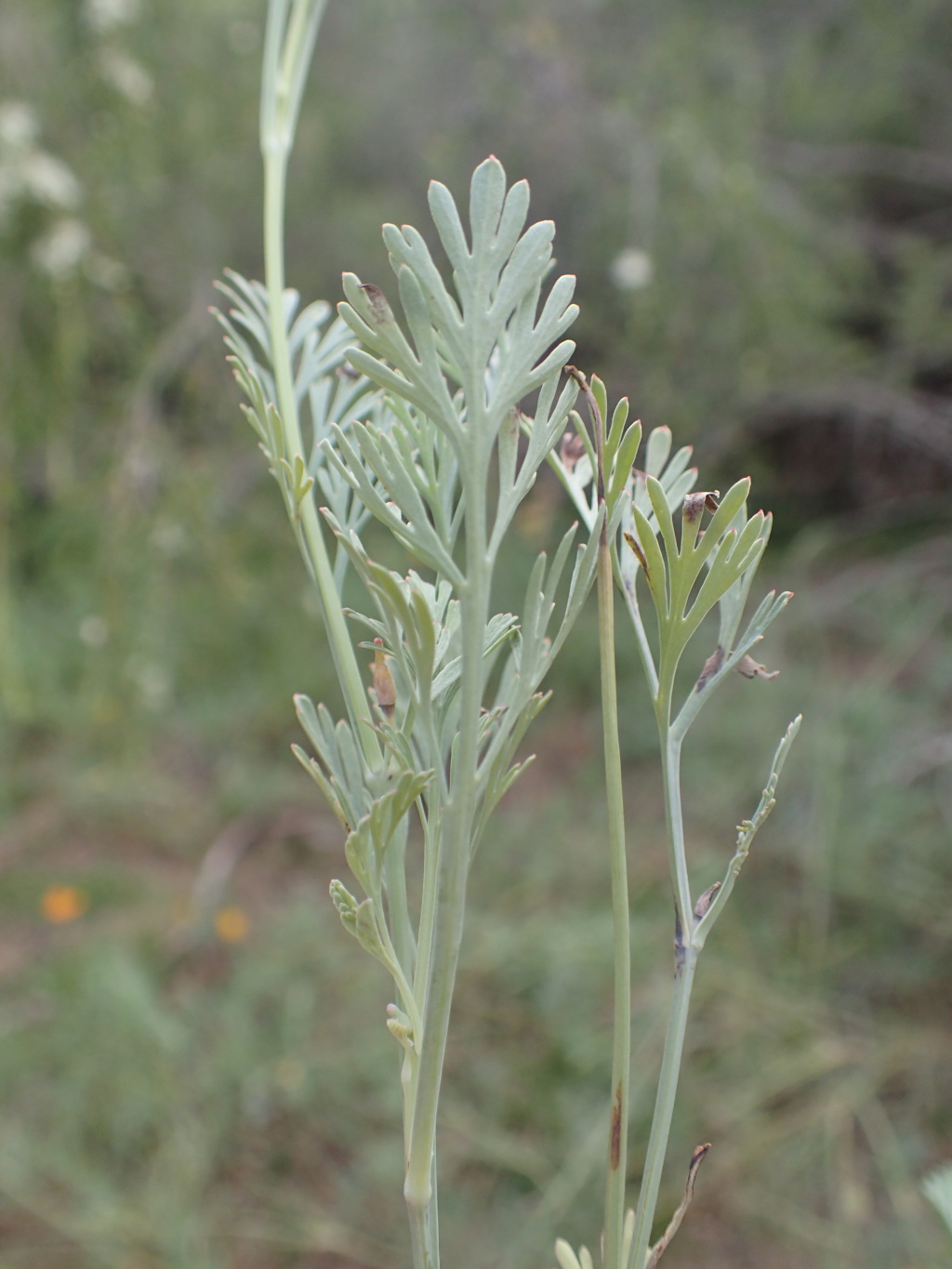Eschscholzia
Annual or perennial, caulescent or subscapose taprooted herbs; sap colourless or orange. Leaves alternate to subopposite; basal and lower-cauline petiolate; upper-cauline subsessile or sessile; blades 1–3-ternately dissected, margin entire. Inflorescence a cyme, 1–many-flowered, bracteate; buds erect or nodding; sepals 2, united into a calyptra, falling as a unit; petals usually 4, in 2 series; filaments basally adnate to petals, stout, usually shorter than anthers; ovary 1-locular, style short to obsolete, stigmas usually 4, unequal. Capsules erect, elongate, terete, ribbed, 2-valved, deciduous, dehiscing explosively from base on separation; seeds many, reticulate or minutely pitted, aril absent.
12 species, all endemic to western North America; 1 species widely cultivated and naturalised in Australia.
Kiger, R.W. (1996). Eschscholzia. In: Walsh, N.G.; Entwisle, T.J., Flora of Victoria Vol. 3, Dicotyledons Winteraceae to Myrtaceae, pp. 72–73. Inkata Press, Melbourne.
 Spinning
Spinning



